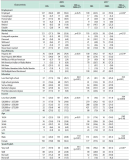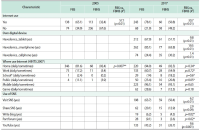JOURNAL OF INFORMATION SCIENCE THEORY AND PRACTICE
- P-ISSN2287-9099
- E-ISSN2287-4577
- SCOPUS, KCI
8권 1호

초록
Abstract
When information professionals deal with other disciplines in the course of digital humanities projects, they often assume that they are dealing with ‘needful users’ who have an ‘information gap’ to fill. This paper argues that the traditional view that information/knowledge is transferred from an information specialist donor to a domain specialist receiver is no longer appropriate in the digital humanities context, where the gap-and-search (or gap-and-filler) approach to information has given way to more direct, explorative engagement with information. The paper asks whether information science and the practising profession are ready for this paradigm shift and examines information science conservatism in two common collaboration scenarios, library support and digital development. It is shown that information science theory still assumes a traditional donor role in both scenarios. How information scientists deal with conservatism in practice is discussed in the example of the Prior project, in which the information science team exerted an ambiguous, hybrid approach with both conservative and non-conservative elements. Finally, two rather hypothetical answers are offered to the question of how information professionals should approach scholarly collaboration in the digital humanities context, where users have ceased to be supplicants. From a purely pragmatic perspective, information scientists need to shift their focus from information needs to research practices and the implications of these practices for digital information systems. More fundamentally, the emergence of digital humanities challenges information professionals to transform information systems designed for searching into digital objects that can be explored more freely by the digital humanities community.

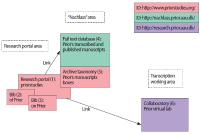


초록
Abstract
Informational urbanism is a new research area in information science. In this study, art history joins informational urbanism: Are digital artworks in public urban spaces recognized as essential assets of a smart city? We employed case study research, working with the example of the huge digital media façade of the Arthouse Graz as an artwork in a public space. In a mixed-methods approach, we asked passers-by and interviewed experts on Graz as a smart city and on the Arthouse’s role concerning the image of Graz as a smart city. The research found strong hints that indeed digital artworks with large screens or media façades at public spaces are parts of a city’s weak location factors as well as of the city’s urban structure and may symbolize the city’s smartness. A practical implication of this finding is that artists, computer and information scientists, city planners, and architects should include interactive contemporary digital art into city spaces in order to demonstrate the city’s way towards knowledge society.

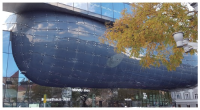




초록
Abstract
This article is a part of a doctoral research project on developing the faculty-librarian collaboration model to support learning and research at Vietnamese universities. The findings of this study have crucial significance in drawing a broader view of the importance of faculty-librarian collaboration and the roles of such collaborators at Vietnamese universities. Qualitative methodology was used to formulate related topics and achieve these research objectives. Semi-structured interviews were carried out at four universities in Vietnam with three key informants, including the faculty, librarian, and administrators (dean/vice dean of faculty, director/deputy director of the library). From March to April 2019, researchers conducted 29 interviews with three participant groups. The striking results of this research showed that the faculty and librarians realized the significance of a collaborative relationship and expect that Vietnamese universities will design and deploy a model to boost the effectiveness of this collaboration. Besides this, the study found that the collaborators play certain important roles within the collaborative relationship, for instance, that of reference, coordinator, special lecturer, cooperator, and information user.

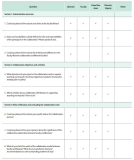

초록
Abstract
The purpose of this work was to study library website users’ actions by tracking their behavior, determining popular content, and identifying browsing patterns and subsequent improvement of access to popular content. The study of behavior models and the use of web analytics has led to the emergence of solutions that improve the usability and functionality of the State Public Scientific-Technological Library of the Siberian Branch of the Russian Academy of Sciences (SPSTL SB RAS) website. These are: identifying user tasks as they are developed, conducting user testing to better understand the event. tracking data and collecting additional data to verify the effectiveness of the changes made. Examining data on the duration of the session and the number of visits will help determine the goals of user visits and develop new recommendations. Usability analysis and testing will make it possible to compare the data obtained using web analytics and the perception of the library site by the users themselves. Recommendations are offered to libraries on the use of data on the real behavior of the target audience of the library website to improve access to library resources and services, increase their relevance and improve information services.

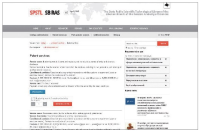

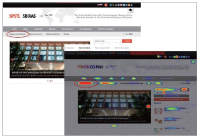


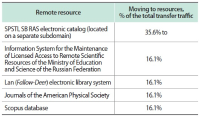
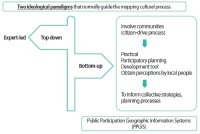
초록
Abstract
Over the years, cultural mapping methods have been used in several applications and contexts, for diverse cultural assets and to create new conditions for the development of local and regional resources. These methods were inspired by the development of big urban centres and regions, which have been the great engine of cultural mapping growth. The main objectives of the present paper are to provide a literature review on cultural mapping methodologies and to develop exploratory research on crowdsource tools on creative tourism which were applied to one Portuguese municipality in 2017. The research was supported by the implementation and integration of geographic information systems (GIS) and web mapping, which will become part of the solution for the growth of less developed territories and to make more interactive tourist activities. Web mapping’s contribution to enhance crowd participation was measured via analysis of 12 digital photos shared through crowdsourcing. The originality of this research lies in the attempt to develop a new model for creative tourism, trying to extend the implementation of Web Mapping crowdsourcing to deprived low density territories. Results show how public participation can be amplified for the tourism market by crowdsourcing tools. These tools look very promising since they can help several members of the public at different ages to contribute to territorial knowledge, engage in activities, and collaborate through digital tools. It is a step to fulfil the lack of studies in this subject and it contributes to the way we think about future studies.

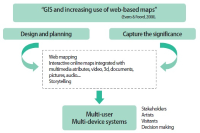
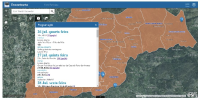
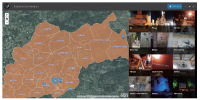
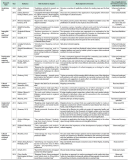

초록
Abstract
This study attempted to uncover the characteristics of health information non-seekers among the United States foreign-born population and identify potential predictors of their non-seeking behavior. The trends of foreign-born health information non-seekers over the past twelve years were also examined. Statistical analysis was conducted with two sets of Health Information National Trends Survey (HINTS) data: HINTS 2 (2005) and HINTS 5 Cycle 1 (2017) datasets. It was found that foreign-born non-seekers differ from foreign-born seekers in terms of a variety of variables including education, income, English proficiency, the uses of Internet and social media, ownership of digital devices, ownership of health insurance, perceived health status, and level of trust in health information sources. Among them, education, Internet use, and trust in online health information were identified as predictors of the foreign-born population’s non-seeking of health information. In addition, three variables - race/ethnicity, age, and place of accessing the Internet - which were significant factors in the 2005 dataset, were no longer significant in the 2017 dataset, implying the possible influence of smartphones that reduces Internet accessibility gaps among different racial/ethnic and age groups.


